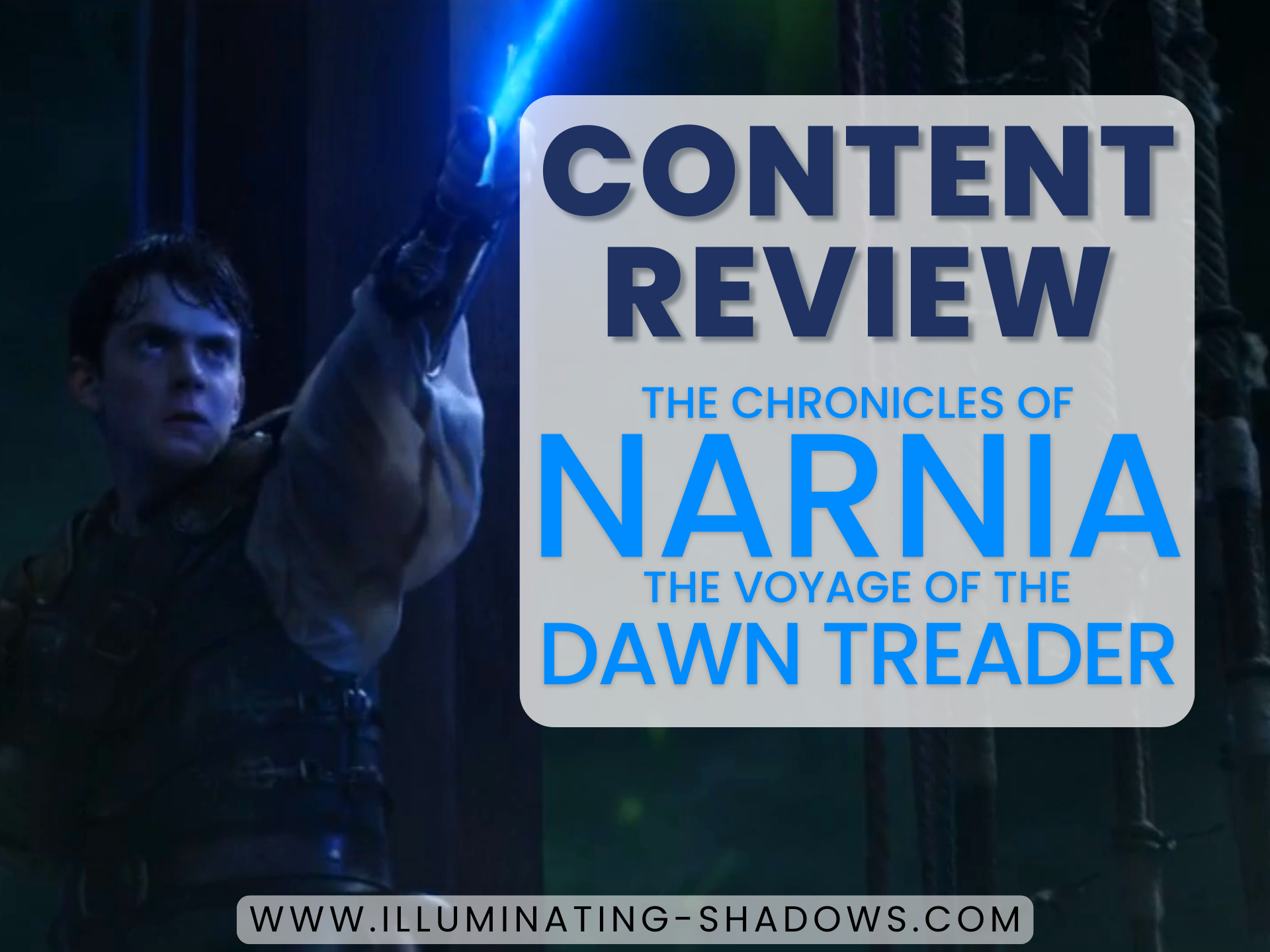Lucy and Edmund return to Narnia, along with their insufferable cousin Eustace, and join their friend king Caspian on his ship the Dawn Treader. It's been 3 Narnian years since their last visit (see the Content Review for The Chronicles of Narnia: Prince Caspian here), and Narnia is finally at peace. With no wars to fight and no one obviously in trouble, the kids agree to join Caspian on his current quest to find his father's loyal lords after they mysteriously disappeared. Little do they know that their quest will end up taking them across the ocean to vanquish a great source of evil.
This page contains affiliate links that earn me a small commission. They don't cost you anything. Their presence/absence doesn't effect the quality of this Content Review. Please see the Disclosures Page to learn more.
Message
Like the previous movies, The Chronicles of Narnia: The Voyage of the Dawn Treader is a Christian allegory where Aslan the lion represents Jesus and the White Witch represents Satan. While the other movies were very subtle about it, this movie is a lot more obvious: the children's goal in the movie is to destroy evil, there's a green mist present that represents evil and temptation, and Aslan's country is symbolically used to represent heaven.
However, the most obvious scene is when Aslan tells Lucy "I shall be watching you always. In your world I have another name. You must learn to know me by it. That was the very reason you were brought to Narnia. That by knowing me here for a little, you may know me better there." Then when asked if they will meet [not in Narnia] again, he says that they will one day.
In addition to the Christian allegory, Lucy and Eustace are each used to teach a lesson. At the beginning of the movie Lucy desires to look just like her sister Susan because she is beautiful; but she later learns self worth. Eustace is a bratty selfish child at the beginning and slowly softens over the course of the movie to become kind and helpful. The lesson to learn from Lucy isn't going to be immediately apparent to every child, despite being easy enough to understand once pointed out, so you'll want to make sure you discuss it with them. Conversely, children will easily pick up on Eustace's difference in character between the beginning and end of the movie; but they won't identify that the root cause was selfishness, so make sure to specifically discuss the role of selfishness in Eustace's character.
Content
Language
There is no swearing in this movie.
Fears
An eerie green fog-like mist is used to represent evil. It kidnaps people, presents temptations, and manifests nightmares. At one point the Dawn Treader sails into it and the mist creates a large sea serpent that the crew must fight. The sea serpent looks pretty scary; it has a cobra like hood, the entire hood and face is covered in tentacles, and its mouth has teeth.
There's a thunderstorm at sea, but it's presented more as a miserable annoyance than scary. There's a brief scene where a dragon accosts the ship. Slave traders briefly kidnap some of the crew. Lucy is kidnapped at night, but the severity is quickly downplayed when the kidnappers ask for her help because they can't read. There's many scenes in the dark, but the darkness isn't presented as scary. The white witch (the strong villain from the first movie) is briefly in a couple scenes as a temptation; while she isn't presented as a strong villain in this movie, your kids may remember her from the first movie.
There's no fires, clowns, or home break-ins.
Family & Relationships
A mother is taken by the mist. Her husband joins the Dawn Treader to help search for her. He tells their daughter to stay with her aunt, but the girl stows away on the ship instead.
There's no divorce, sexual content, sneaking out, or bullying.
Other Content
Narnia is a fantasy world with talking creatures. Spells are mentioned, but they aren't sinister and instead are things like making it snow or invisibility.
There's several swordplay fight scenes which are pretty mild. There's a fight with the slave traders that ends up having a lot of people getting beat up. The violence is much less than the previous movies; it appears no one dies from fighting in this movie and instead they just get beat up.
As mentioned previously, the movie can be viewed as a Christian allegory just like the previous movies.
Most of the movie isn't too intense, however the ending could be for smaller kids. It weaves the sea serpent fight with Eustice's mortal wounding, Aslan's return, and the conquering of evil all simultaneously.
Conclusion
The Chronicles of Narnia: The Voyage of the Dawn Treader is a little different than the formula used to make the two previous war heavy movies, but it has a great message and very little to object to.








No comments
Post a Comment